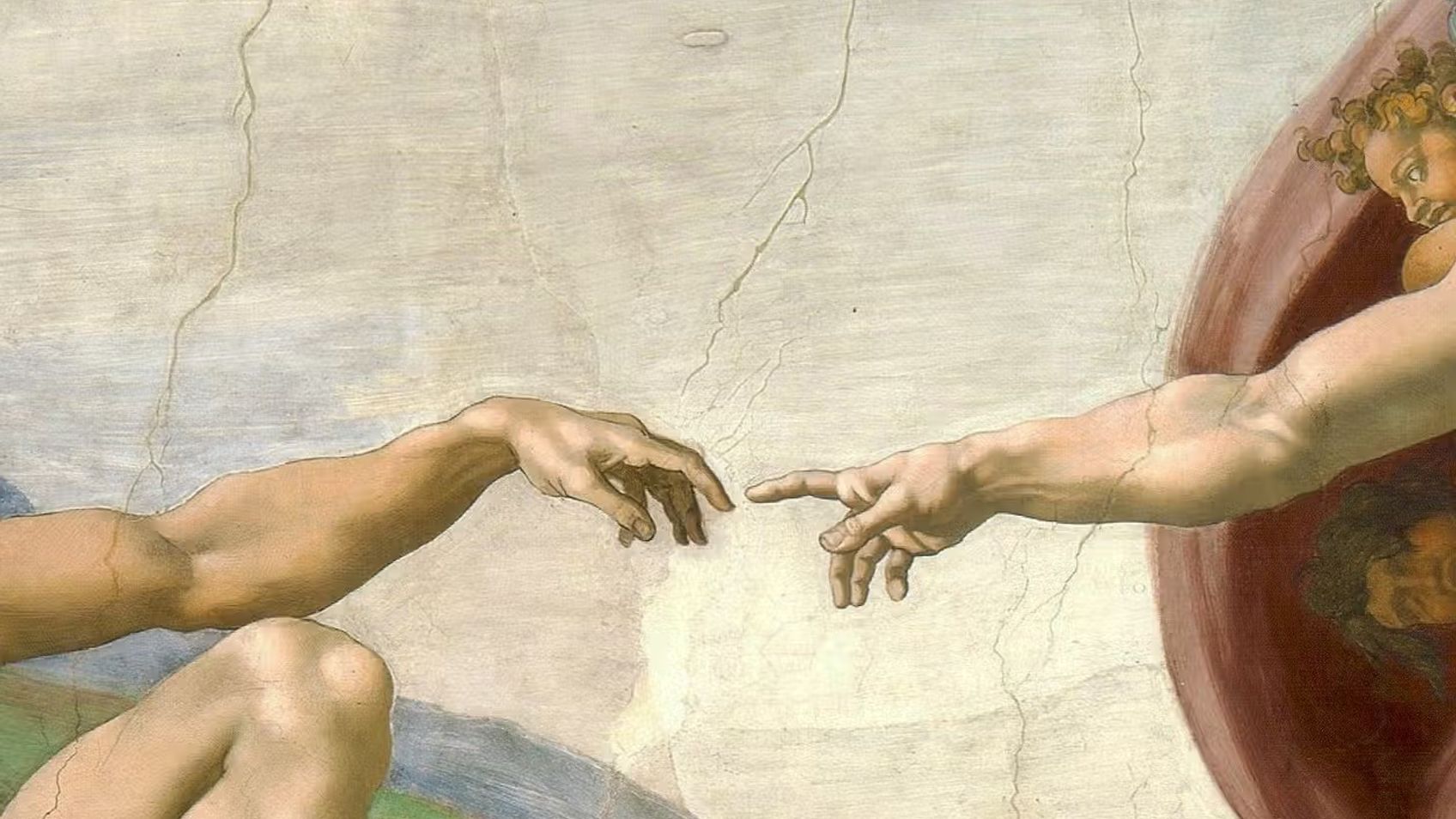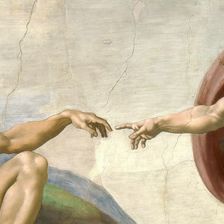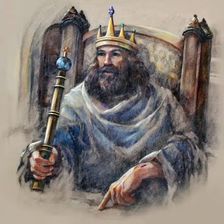
Evidence Against Evolution
Creation and Evolution — Steve GreggNext in this series
Evidence of Creation
Evidence Against Evolution

Creation and EvolutionSteve Gregg
Steve Gregg presents arguments against the theory of evolution by examining various evidences in support of creationism. He questions the notion that the outward structure of organs, such as tails, hold no significance and argues that similarities in appearance do not necessarily indicate common ancestry. Gregg challenges the fossil record, stating the absence of transitional forms and arguing that the fossil evidence does not align with the gradual view of evolution. He introduces alternative explanations, such as sudden transformation and genetic monstrosities, highlighting contradictions within the evolutionary theory.
More from Creation and Evolution
4 of 4

Next in this series
Evidence of Creation
Creation and Evolution
Steve Gregg presents evidence supporting the theory of creation by highlighting the absence of transitional forms in both the present and the fossil r
2 of 4

Evidence Against Creation
Creation and Evolution
Steve Gregg presents evidence against the theory of evolution, specifically focusing on scientific and naturalistic explanations. Highlighting that su
Series by Steve Gregg

Knowing God
Knowing God by Steve Gregg is a 16-part series that delves into the dynamics of relationships with God, exploring the importance of walking with Him,

Making Sense Out Of Suffering
In "Making Sense Out Of Suffering," Steve Gregg delves into the philosophical question of why a good sovereign God allows suffering in the world.

Ephesians
In this 10-part series, Steve Gregg provides verse by verse teachings and insights through the book of Ephesians, emphasizing themes such as submissio

Kingdom of God
An 8-part series by Steve Gregg that explores the concept of the Kingdom of God and its various aspects, including grace, priesthood, present and futu

Toward a Radically Christian Counterculture
Steve Gregg presents a vision for building a distinctive and holy Christian culture that stands in opposition to the values of the surrounding secular

Original Sin & Depravity
In this two-part series by Steve Gregg, he explores the theological concepts of Original Sin and Human Depravity, delving into different perspectives

Psalms
In this 32-part series, Steve Gregg provides an in-depth verse-by-verse analysis of various Psalms, highlighting their themes, historical context, and

Wisdom Literature
In this four-part series, Steve Gregg explores the wisdom literature of the Bible, emphasizing the importance of godly behavior and understanding the

Sermon on the Mount
Steve Gregg's 14-part series on the Sermon on the Mount deepens the listener's understanding of the Beatitudes and other teachings in Matthew 5-7, emp

Cultivating Christian Character
Steve Gregg's lecture series focuses on cultivating holiness and Christian character, emphasizing the need to have God's character and to walk in the
More on OpenTheo

Should I Pray for Protection for Persecuted Christians When God Might Want Them to Be Martyrs?
#STRask
September 4, 2025
Questions about how to pray for persecuted Christians in light of the fact that God wills that some will be martyrs, and how persecuted Christians who

Corey Miller: The Progressive Miseducation of America
Knight & Rose Show
September 27, 2025
Wintery Knight and Desert Rose welcome Dr. Corey Miller to discuss The Progressive Miseducation of America. They examine how universities promote scie

How Do These Passages Fit with Your View on How God Speaks?
#STRask
September 15, 2025
Questions about why, if it’s impossible to miss God’s voice, the disciples incorrectly told Paul “through the Spirit” not to go to Jerusalem, people m

The Historical Perspective vs. The Theological Perspective on the Resurrection: Are Both Valid?
Risen Jesus
October 1, 2025
This episode is a discussion between Dr. Mike Licona and then PhD candidate Laura Robinson on the Capturing Christianity podcast. While both scholars

Faith Journeys: Similar Road, Different Conclusions - A Licona Ehrman Discussion
Risen Jesus
September 24, 2025
On the Risen Jesus podcast today, Dr. Michael Licona and Dr. Bart Ehrman join Justin Brierly on his Unbelievable podcast to discuss their faith journe

Protestants and Catholics: What’s the Difference? With Chad Van Dixhoorn, Blair Smith, and Mark McDowell
Life and Books and Everything
November 26, 2025
How should Protestants think about the Catholic Mass? About the Eucharist? About the history and development of the papacy? In this panel discussion,

How Do I Reconcile the Image of God as Judge with His Love, Grace, and Kindness?
#STRask
October 20, 2025
Questions about how to reconcile the image of God as a judge with his love, grace, and kindness, why our sins are considered to be sins against God, a

What Are Some Good Ways to Start a Conversation About God with Family Members?
#STRask
October 30, 2025
Questions about how to start a conversation about God with non-Christian family members, how to keep from becoming emotional when discussing faith iss

How Does It Affect You If a Gay Couple Gets Married or a Woman Has an Abortion?
#STRask
October 16, 2025
Questions about how to respond to someone who asks, ”How does it affect you if a gay couple gets married, or a woman makes a decision about her reprod

How Can I Showcase God’s Goodness When I’m Struggling in My Suffering?
#STRask
September 8, 2025
Questions about how to showcase God’s goodness when we’re really struggling in our suffering, an explanation of God’s response at the end of the book

The Heidelberg Catechism with R. Scott Clark
Life and Books and Everything
November 3, 2025
You may not think you need 1,000 pages on the Heidelberg Catechism, but you do! R. Scott Clark, professor at Westminster Seminary California, has writ

Conservatism and Religious Freedom with John Wilsey
Life and Books and Everything
October 27, 2025
What is conservatism? And why does it go hand in hand with religious freedom? How should we think about the American experiment of ordered liberty? Ha

Why Do We Say Someone Was Saved on a Particular Date If It Was Part of an Eternal Plan?
#STRask
November 24, 2025
Questions about why we say someone was saved on a particular date if it was part of an eternal plan, the Roman Catholic view of the gospel vs. the Bib

Lora Ries: Border Security and Immigration Policy
Knight & Rose Show
December 7, 2025
Wintery Knight and Desert Rose welcome Lora Ries to discuss border security and immigration policy. They explore Biden's policy changes, like ending R

Is “God the Father” a Sexist Term That Demeans Women?
#STRask
September 29, 2025
Questions about whether “God the Father” is a sexist term that demeans women in general and mothers in particular, how long Hell has been there, wheth